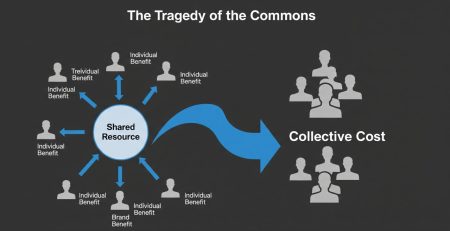What’s Slowing You Down Isn’t What You Think
I first discovered Peter Senge (Professor at MIT) while in graduate school, studying management and leadership.
The book was The Fifth Discipline, and it quickly became one of those rare books that permanently changes how you see the world.
Senge writes about systems thinking—how business problems are rarely isolated, how cause and effect are often separated by time and space, and how the same patterns show up again and again.
Just think about your golf swing, trying to convince a friend to make better choices, or the average company’s solution to sales and marketing: Does pushing harder ever work? Nope.
The biggest takeaway for me was his breakdown of systems archetypes. And the one that’s stuck with me, helped me, and saved me the most over the years is called Limits to Growth.
In honor of the 4th, consider this story about George Washington to illustrate.
In late 1776, the American Revolution was failing. Morale was collapsing. Troop enlistments were expiring. Washington had just lost New York and retreated across New Jersey. The instinct in most leaders would have been to push harder: more battles, more force, more heroic last stands.
But Washington did something different.
He recognized that the limiting factor wasn’t the British army’s strength. It was his own army’s belief that the war could still be won.
Instead of fighting a conventional campaign, he shifted strategy. On the night of December 25th, he crossed the Delaware River and struck a surprise attack on Hessian forces in Trenton.
It wasn’t a major military win in terms of scale. But it was perfectly timed to break through the real resistance: despair, disillusionment, and time. The delay loop was psychological. The win removed it.
By removing the friction, and not merely applying more force, Washington restarted the momentum of an entire revolution.
THE PROBLEM
If you’re ambitious, driven, and goal-oriented, the instinct is usually to push harder when growth slows.
Work more. Add pressure. Do more reps. Spend more. Launch more. Talk more.
But the “Limits to Growth” archetype reveals something we easily miss:
Often, we are not stuck because of a lack of effort. We’re stuck because something in the system is resisting growth. That resistance is often invisible until you look for it.
Growth pushes. The system pushes back.
This resistance might be time delays. Or it might be fear, burnout, process bottlenecks, team friction, unclear vision, or cultural drag.
You can work harder. You might even break through temporarily. But if the resistance is never addressed, it comes back stronger. In the end, your efforts become the things that then reinforces your delay or lack of results.
THE SOLUTION: REMOVE THE RESISTANCE
Instead of doubling down on force, Senge’s model invites a different approach.
- Recognize Delays: Often, the system is responding, but slowly. You’re planting seeds and expecting a harvest tomorrow. Look for time-lagged cause and effect before calling something broken.
- Find the Limiting Factor: Every system has a hidden brake. It could be a broken handoff between departments, a misaligned incentive, a talent gap, or a fear no one is naming. Growth will always stall at the weakest point in the system.
- Remove Friction Before Adding Force: Before adding pressure or resources, find what’s resisting progress and eliminate it. Removing the brake creates more momentum than slamming the gas ever could.
APPLICATIONS
This shows up everywhere:
Your sales are flat, so you launch new ads when the real issue is follow-up. Your team misses deadlines, so you work nights when the real issue is a broken scoping process. You feel burned out, so you push through when the real issue is emotional friction or lack of clarity. You train harder increasing overuse injuries of chronic fatigue when the issue may be sleep, nutrition, hydration, or mobility…
Force feels productive. But clarity wins long term.
YOUR CHALLENGE
Where are you pushing harder when you should be asking:
What’s the real limiting factor here?
Find one area this week where you feel stuck or stalled. Step back. Look at the system. Don’t ask how to push through. Ask what’s pushing back.
Then fix that.
See you next Saturday.
Follow here for more.




Leave a Reply